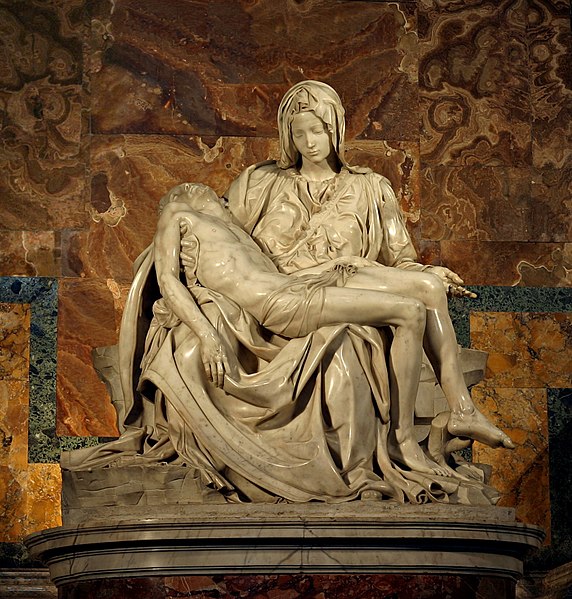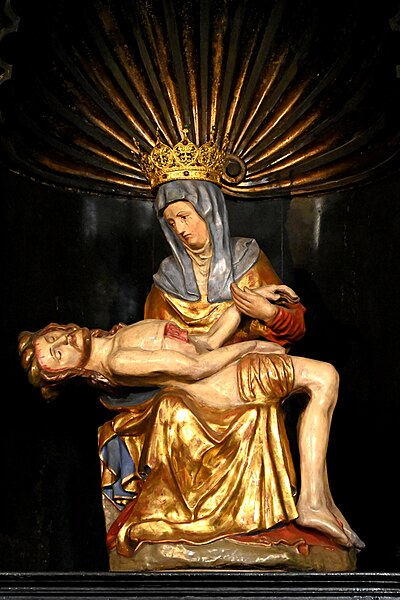The Pietà is a subject in Christian art depicting the Blessed Virgin Mary cradling the dead body of Jesus Christ after his Descent from the Cross. It is most often found in sculpture. The Pietà is a specific form of the Lamentation of Christ in which Jesus is mourned by the Virgin Mary alone. However, in practice works called a Pietà may include angels, the other figures usual in Lamentations, and even donor portraits.
Michelangelo's Pietà in Saint Peter's Basilica, 1498–1499
Pieta of Kampbornhofen, Germany
The Pieta as “Our Lady of Charity” (1723) from Cartagena, Spain
The Deposition, 1547–1555, Michelangelo, Museo dell'Opera del Duomo, Florence
Pity is a sympathetic sorrow evoked by the suffering of others. The word is comparable to compassion, condolence, or empathy. It derives from the Latin pietas. Self-pity is pity directed towards oneself.
Pity the sorrows of a poor old man
Alexander sees with a look of pity that Darius has died from his wounds.
The Human Abstract, a poem in William Blake's collection Songs of Innocence and of Experience, in which he proclaims "Pity would be no more, / If we did not make somebody Poor" (1–2). This version is copy L created in 1795 and currently held by the Yale Center for British Art.







